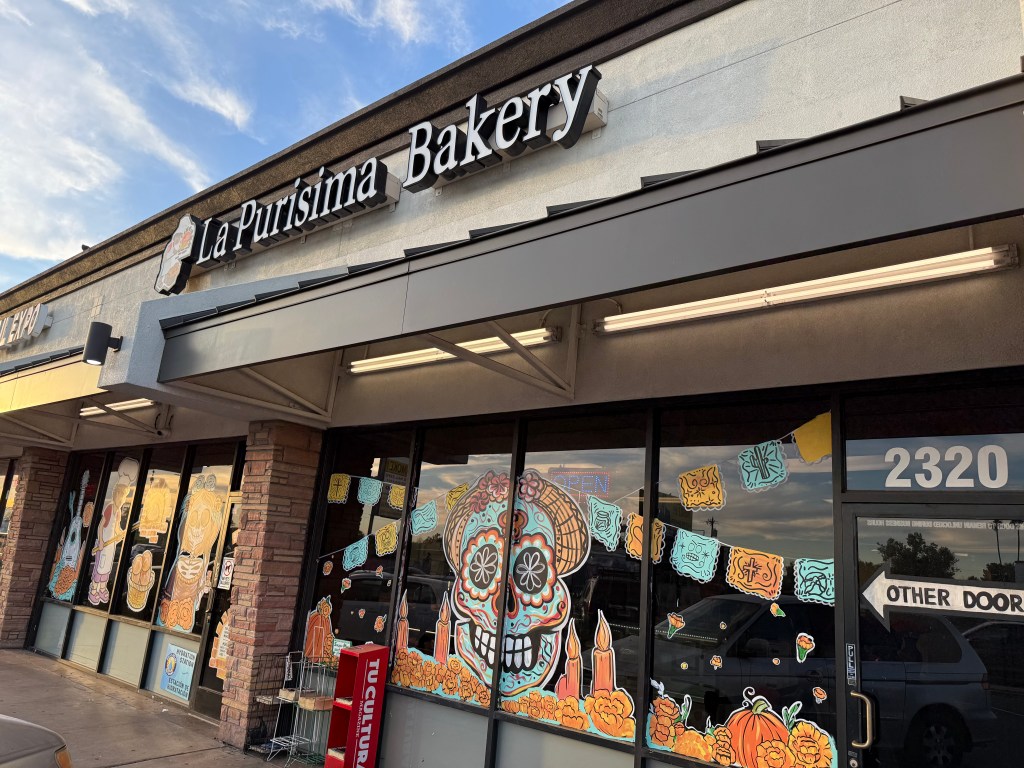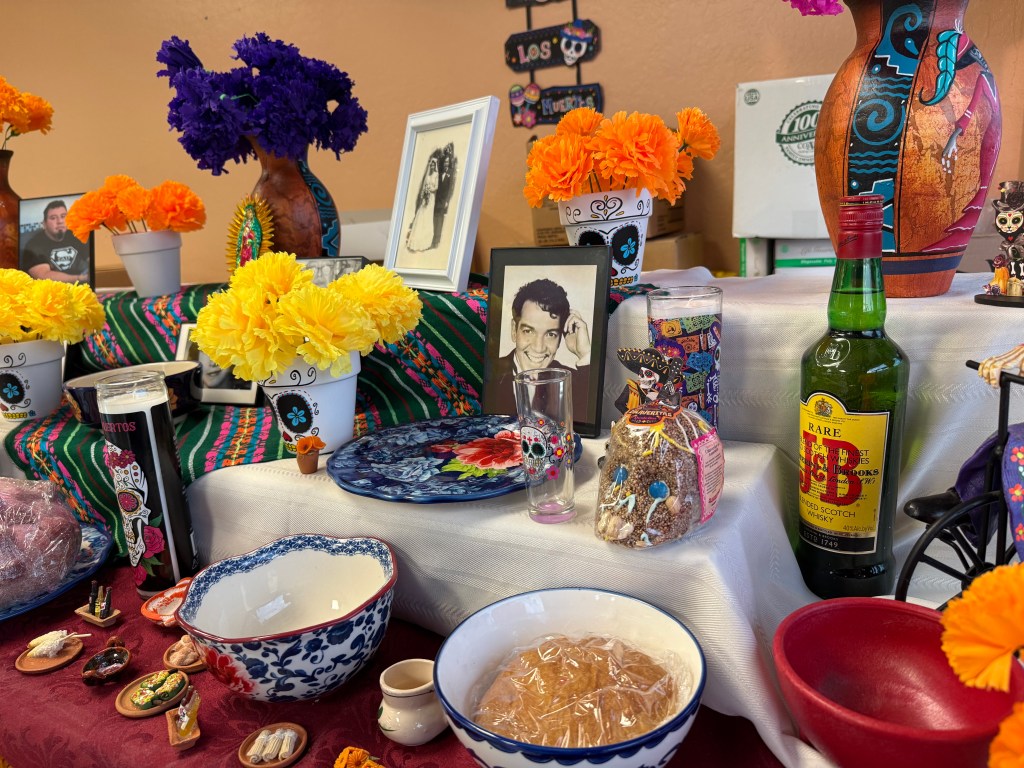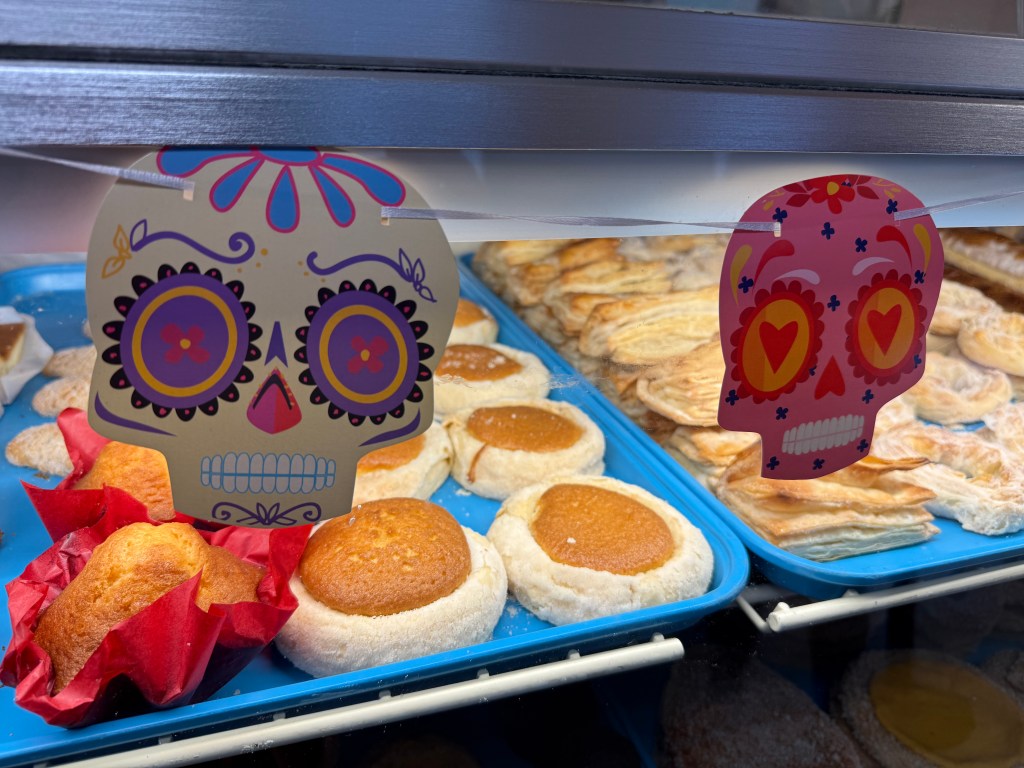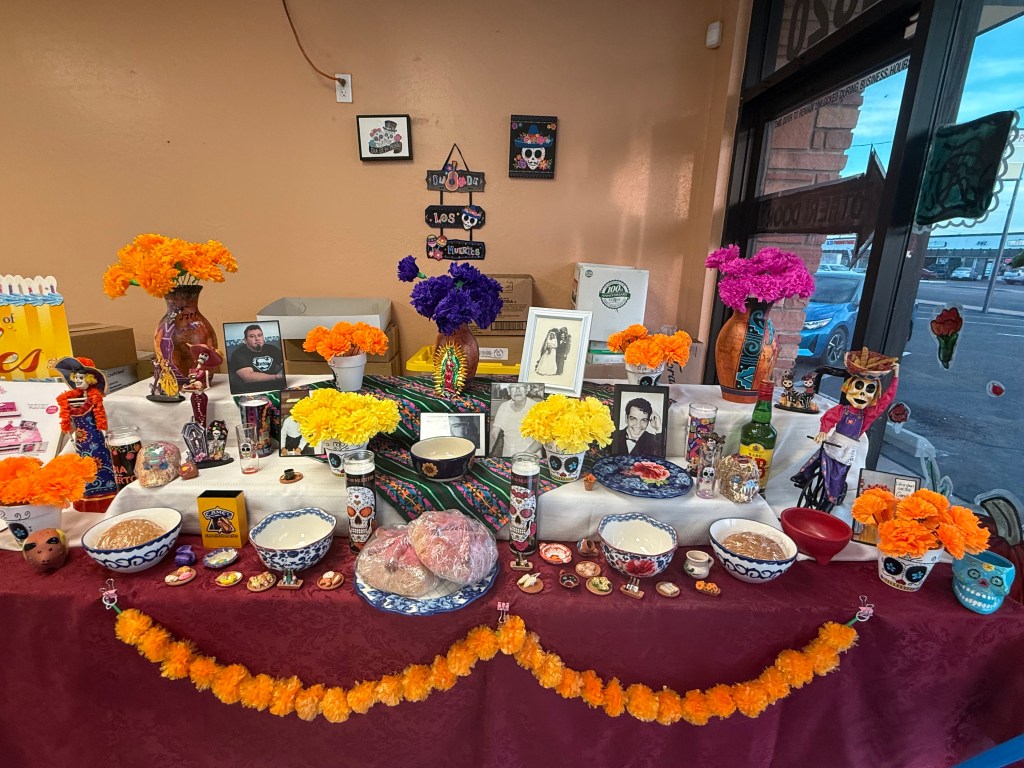
Ofelia Montelongo

Audio By Carbonatix
For more than 40 years, the aroma of freshly baked bread has drifted out the doors of La Purisima Bakery in Phoenix. As Día de los Muertos approaches, the scent blends with cinnamon and orange blossom as bakers craft loaves of bread with dough shaped into bones, known as pan de muerto. To the left, an altar flickers with candles, marigolds and photos of those who have passed away.
Founded by Juan and Maricela Arellano, La Purisima was born from a love of bread. Since they opened their doors on December 12, 1983, they have been providing authentic Mexican pastries to shoppers in the Valley.
Their daughter-in-law, Irma Arellano, who is the general manager, is proud of this legacy and tradition.
“Día de los Muertos has been a tradition since I was a little girl, a way to remember those who have passed, to keep their memory alive, and to teach our children about our grandparents, our aunts and uncles, our loved ones who are no longer with us,” Arellano says in Spanish.
Arellano, originally from Mexico, moved to the United States when she was 11 years old. In Morelos, Mexico, her grandparents baked the bread of the dead in a giant stone oven. When she came to the U.S., the tradition continued with altars honoring their family members on her mother’s kitchen table, and over time it blossomed into a bigger ofrenda.
The altars typically showcase the photos of their departed, flowers, the muertos’ favorite foods, drinks, and of course, pan de muerto.
La Purisima bakes two sizes of the seasonal bread. Small loaves are 7 to 8 inches and cost $7 and large ones are 10 inches for $12.
The recipe comes from Juan Arellano’s father, and it is traditional Michoacan style. In other parts of Mexico, bakers make different figurines into pan de muerto and add sesame on top instead of sugar.
Although La Purisima has modified the recipe over the years, such as adding the reddish sugar on top, and because ingredients are not always the same as in Mexico, the pan de muerto is true to its roots. The sugary bread remains fluffy and round, with bone-shaped pieces of dough on top. The roundness of the bread represents the cycle of life and death.
The pan de muerto is meant to be shared. Arellano remembers sharing food and bread at the cemetery each year on November 1 and 2 with other families and neighbors, but not in a sad, mourning way.
“Día de los Muertos is not about crying for your loved ones who have passed, but about knowing they come back to be with you. As long as you don’t forget them, they stay alive within us,” Arellano says.
At their three locations, La Purísima sets up collaborative altars for Día de los Muertos. Employees are invited to bring photos of their departed loved ones, and customers also contribute by adding flowers, candles and pictures of their relatives or comedians and actors they loved.
The community-built altar becomes a shared space of remembrance and celebration, staying on display for a week after Día de los Muertos.
“We invite people to embrace the tradition and enjoy it with their families, to teach it to our children and future generations, so they can cherish it, because just as we celebrate life, we should also celebrate death,” Arellano says.
La Purisima Bakery
4533 W. Glendale Ave., Glendale
2318 E. Indian School Road
602 W. Union Hills Drive








